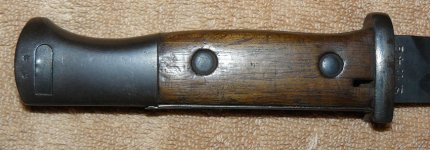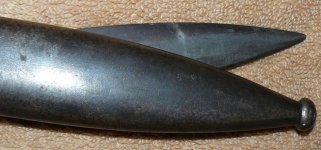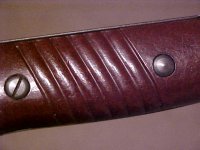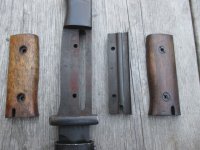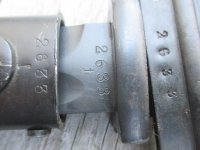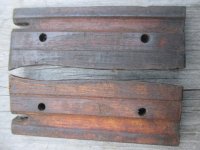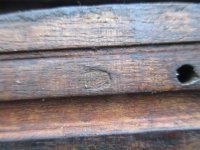First time I have observed the "neutered" grip screws on such an early bayonet. I have seen a few of these used on primarily '43-'44 vintage Horster S84/98 T3s. Sometimes it is just one screw, like on the example pictured. I have a friend whom has a similar bayonet with both screws like this. BTW, the bayonet I pictured is a screwball example I bought back in the 1980s.
I had examined a 43asw with this black paint on the scabbard and thought it must be the result of someone painting it for some reason, so moved on. Over the course of many years, I encountered another, similar example, then yet another. I then began to put the pieces together and came to the conclusion that they shared a number of characteristics. Most notably was the scabbards all looked like they had seen major repairs.
The scabbard on the bayonet pictured is nicely blued under the paint except the upper one-third, where no finish remains and numerous file marks are found all around the frog stud area. I recalled observing what looked like repairs on the other bayonets as well. I want to say these bayonets were numbered in the same or in close approximation to the "ss" letter bloc as well. Unfortunately, because I had encountered them infrequently, and perhaps several years in between, I did not retain the specifics.
However, when I came to the realization there was something to this, I decided to buy the next one I ran across. I recalled whom had this particular bayonet (the most recent example I had seen). The seller would turn up at a major collector show held every six months, and I remembered him having it for several years. So, when he surfaced the next time I gave him the $20.00 he wanted for it... figuring even though it was a mis-match, I knew it to be something more, and got that neat neutered grip screw as a bonus...

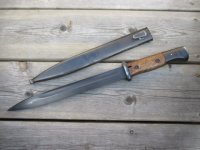
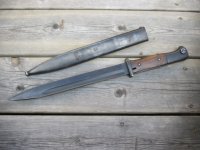

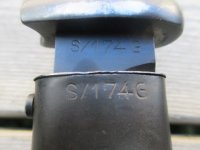

 Never learned the german WaA nomenclature. Whats the difference?
Never learned the german WaA nomenclature. Whats the difference?





